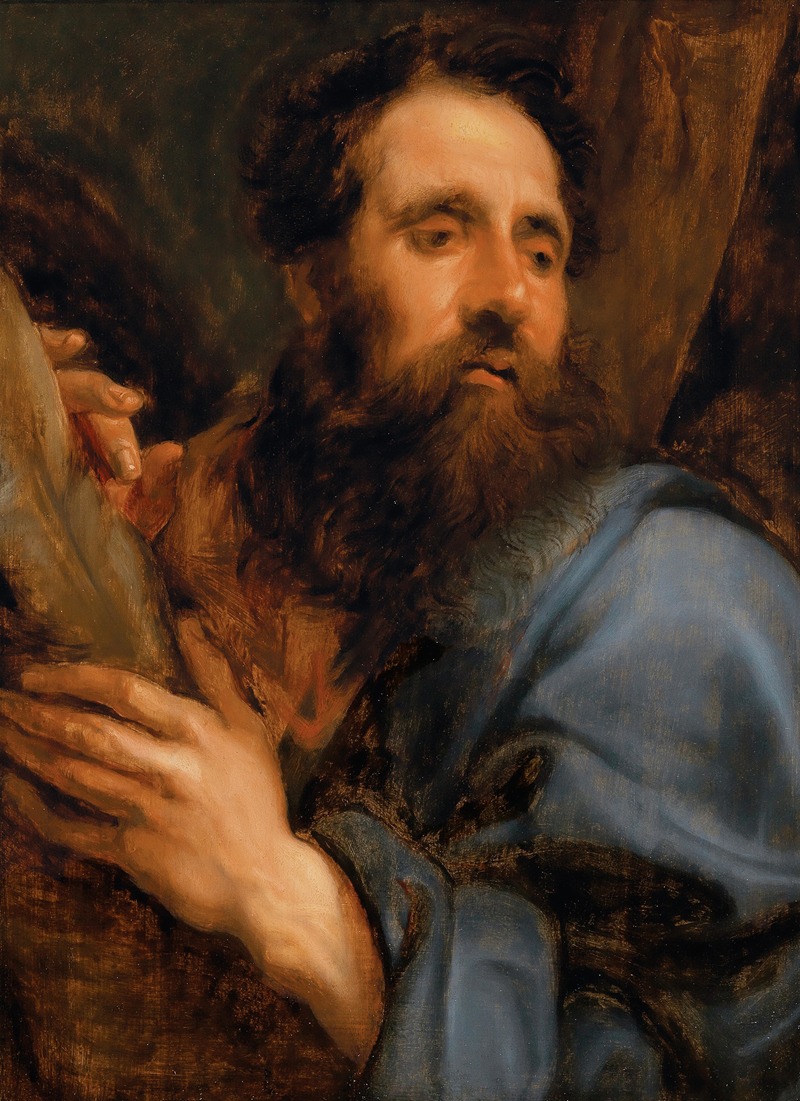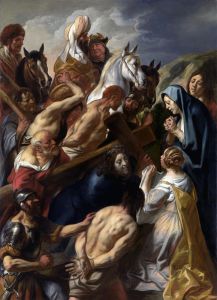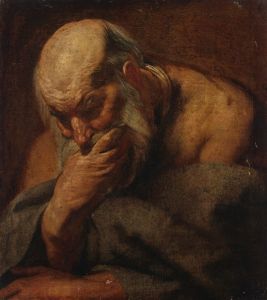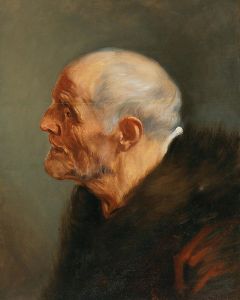
Saint Andrew
A hand-painted replica of Anthony van Dyck’s masterpiece Saint Andrew, meticulously crafted by professional artists to capture the true essence of the original. Each piece is created with museum-quality canvas and rare mineral pigments, carefully painted by experienced artists with delicate brushstrokes and rich, layered colors to perfectly recreate the texture of the original artwork. Unlike machine-printed reproductions, this hand-painted version brings the painting to life, infused with the artist’s emotions and skill in every stroke. Whether for personal collection or home decoration, it instantly elevates the artistic atmosphere of any space.
"Saint Andrew" is a painting by the renowned Flemish Baroque artist Anthony van Dyck, who was a prominent figure in the 17th-century art scene. Van Dyck was known for his portraits and religious works, and he was a leading court painter in England. This particular painting, "Saint Andrew," is one of his notable religious compositions.
Anthony van Dyck was born in Antwerp in 1599 and became a master in the Guild of Saint Luke by the age of 19. He was a student of Peter Paul Rubens, whose influence is evident in van Dyck's work, particularly in his use of color and composition. Van Dyck's career took him across Europe, where he worked in Italy, the Southern Netherlands, and England, eventually becoming the principal court painter to King Charles I of England.
"Saint Andrew" depicts the apostle Andrew, who is recognized as the patron saint of Scotland, Russia, and several other countries. In Christian tradition, Saint Andrew was one of the twelve apostles of Jesus and the brother of Saint Peter. He is often depicted with a cross, known as a saltire or Saint Andrew's Cross, which is associated with his martyrdom. According to tradition, Saint Andrew was crucified on an X-shaped cross, which has become a symbol of his legacy.
In van Dyck's portrayal, Saint Andrew is typically shown as an older man with a beard, reflecting the common iconography of the saint. The painting captures the spiritual intensity and devotion of the apostle, a characteristic feature of van Dyck's religious works. The artist's skillful use of light and shadow, along with his attention to detail, brings a sense of realism and depth to the figure of Saint Andrew.
Van Dyck's "Saint Andrew" is celebrated for its emotional resonance and the artist's ability to convey the saint's piety and strength. The painting exemplifies van Dyck's mastery in rendering human emotion and his adeptness in religious storytelling through art. His works often reflect a blend of Italian and Flemish influences, showcasing his exposure to different artistic traditions during his travels.
The painting is part of van Dyck's broader oeuvre of religious art, which includes other depictions of saints and biblical scenes. Van Dyck's religious paintings were highly sought after during his lifetime, and they continue to be admired for their artistic and historical significance.
"Saint Andrew" by Anthony van Dyck is housed in various collections, and like many of his works, it has been studied for its artistic merit and its contribution to the Baroque movement. Van Dyck's legacy as a painter is marked by his ability to capture the human spirit and his influence on subsequent generations of artists.
Overall, "Saint Andrew" is a testament to Anthony van Dyck's skill as a painter and his ability to infuse his works with both technical precision and emotional depth. The painting remains an important piece within the context of Baroque religious art and continues to be appreciated by art historians and enthusiasts alike.

















